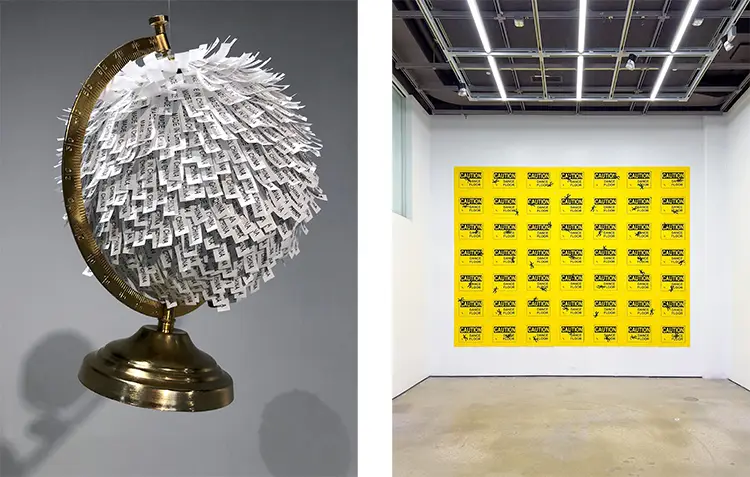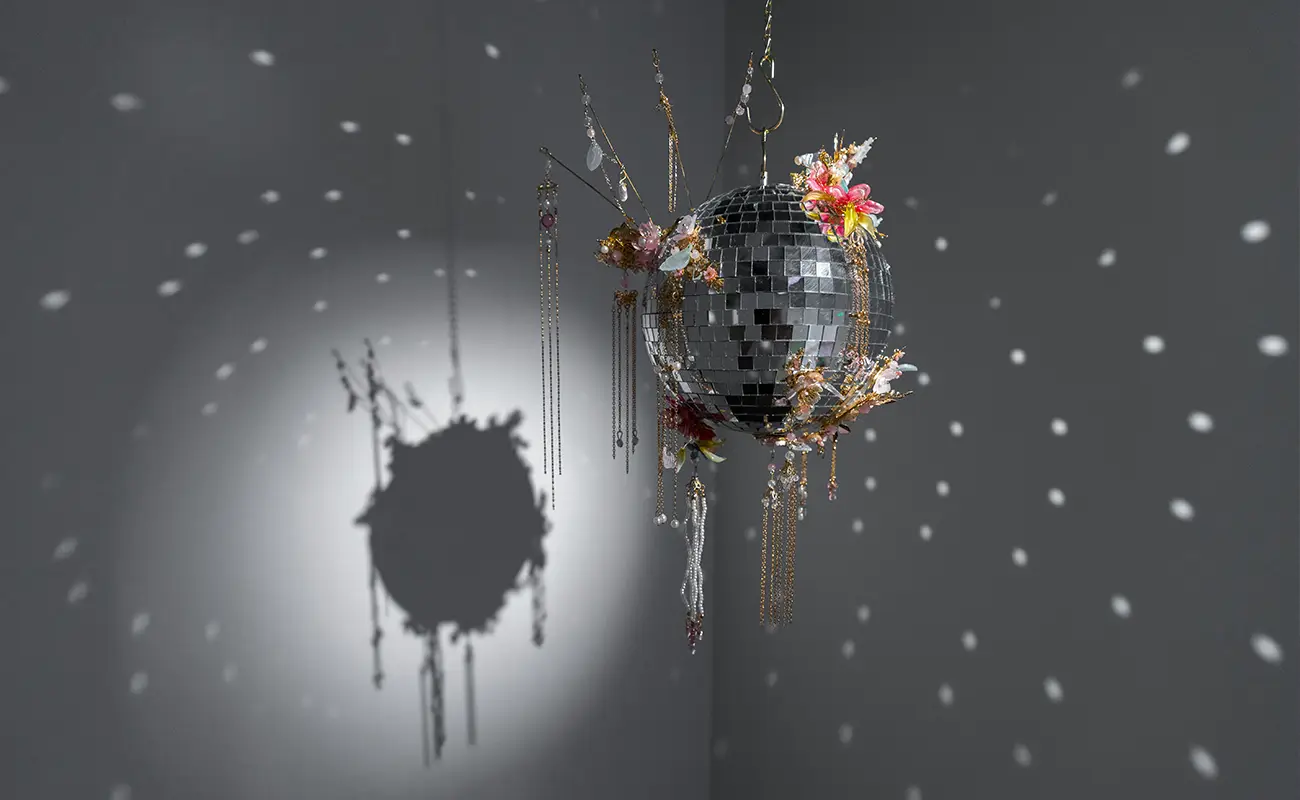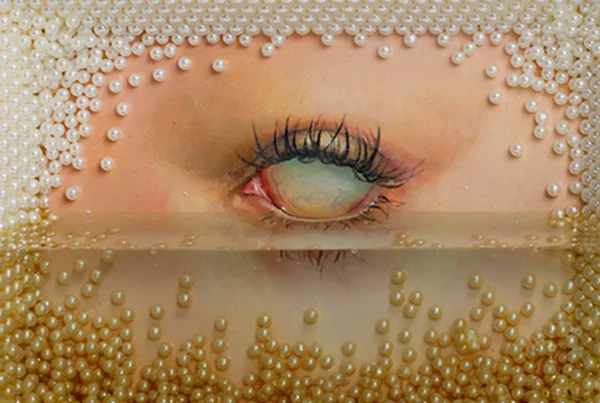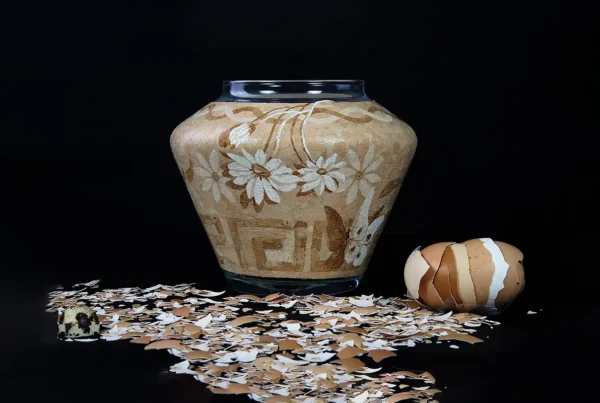“I’m not trying to eliminate distractions—I invite them in.”
Sculpting the Spectacle: Queerness, Culture, and the Politics of Performance
Emerging from the industrial heart of Shijiazhuang, China, and now creating from within Chicago’s urban pulse, Yiwei Leo Wang has shaped an artistic identity that pulses with contradiction, complexity, and celebration. Growing up queer in a city more known for factories than subcultures, Wang experienced early life within a blend of constraint and invisibility. This background significantly informs his art, which often examines the tensions between being seen and being erased, between labor and spectacle, and between constructed identity and raw personhood. His work exists at the intersection of survival and glitter, drawing from the visual chaos and ecstatic language of social media, club culture, and digital displacement. In these fragmented worlds, Wang finds a rich space to explore how bodies and identities perform, morph, and radiate.
Art, for Wang, began as a form of communication long before language had caught up with his experiences. In the absence of vocabulary to explain queerness, cultural collision, or emotional contradiction, he turned to imagery. Visual art became the translator of unspeakable things, channeling emotional confusion into tactile, vivid forms. What started as an internal coping mechanism soon grew into a connective force, allowing others to find fragments of themselves in his creations. This feedback loop—where self-expression turns communal, where intimacy collides with performance—fuels much of Wang’s practice today. His art doesn’t merely speak; it reverberates, unsettling assumptions while stitching unexpected connections between artist, viewer, and space.
Wang’s aesthetic is unmistakable: bold, glimmering, and at times deliberately absurd. By blending luxury tropes with dollar-store materials—mirror balls, faux fur, candy, plastic florals—he constructs objects that straddle camp and critique. His interest lies in the charged surfaces of nightlife, in the unspoken rituals of consumer culture, and in the layered spectacle of pop media. Central to his work is the idea that appearance is not deception, but declaration. He reframes the artificial as authentic, the flashy as profound. Within these aesthetic collisions, Wang interrogates how desire, identity, and performance are negotiated, adorned, and consumed.
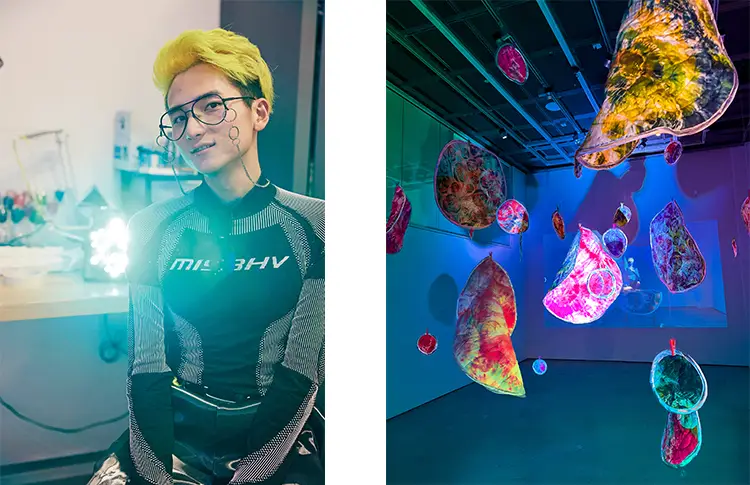
Yiwei Leo Wang: Distraction as Design, Studio as Stage
Rather than battling distractions in pursuit of some imagined purity of process, Wang turns disruption into a collaborator. His studio is a sensorial landscape designed to echo the environments that inspire him—dance floors, neon-lit nights, moments of emotional release. Music pulses, surfaces shimmer, and textures accumulate like memories. Even alcohol sometimes plays a role, not for escape, but to conjure a looser, more instinctual state of being. The space functions less like a workshop and more like a mirror of his cognitive and emotional processes. It is not a retreat from the world but a reconfiguration of it, allowing intuition and impulse to guide creation.
Wang does not restrict himself to traditional definitions of medium or form. Instead, he follows the demands of each concept, letting the idea dictate the materials. Whether it’s ceramics, fabric, augmented reality filters, or synthetic materials associated with mass production, his approach is fluid and strategic. He gravitates toward objects that already carry cultural connotations—stickers, fake fur, glittery decor—imbuing them with new contexts and emotional charges. These materials often arrive already speaking, saturated with familiarity or kitsch, which Wang recontextualizes into something simultaneously personal and performative.
His influences reflect his interests in persona, repetition, and constructed identities. Artists like Andy Warhol, Jeff Koons, and Daniel Arsham inform his relationship with surface and spectacle. Warhol, in particular, left a lasting imprint, especially through his manipulation of ritualized repetition and celebrity aesthetics. Receiving a grant supported by the Andy Warhol Foundation marked a profound moment of resonance for Wang. It confirmed that his work, which fuses irony with sincerity, fantasy with critique, belongs to an ongoing lineage of artists who challenge the boundaries between fabrication and truth, fame and anonymity.
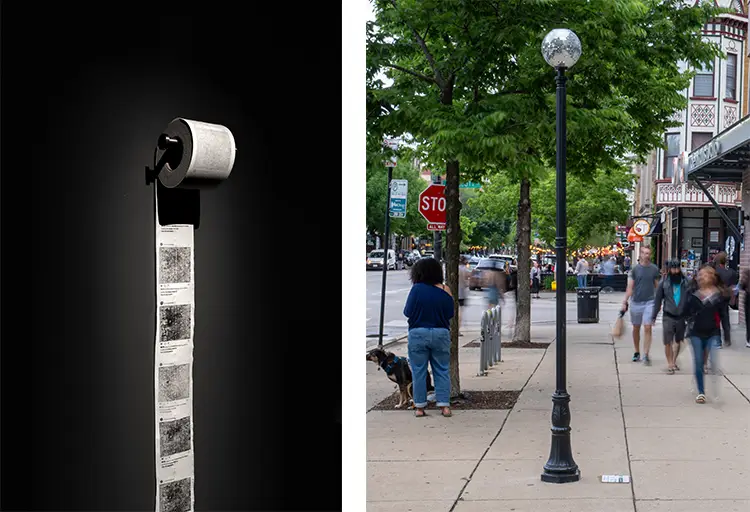
Echoes in Glass: The Fragile Glitter of ‘Flower in the Mirror, Moon on the Water’
Among Wang’s diverse body of work, one series stands out as particularly resonant: Flower in the Mirror, Moon on the Water. Borrowing its name from a Chinese proverb evoking the allure of the unattainable, the series reveals the artist’s most intimate engagement with beauty, longing, and disconnection. Constructed from mirror balls and delicate plastic florals traditionally used for body decoration, these sculptures shimmer with theatricality. Yet beneath their exuberant appearance lies a quiet, persistent ache. The pieces reflect not only light but the existential tension between performance and solitude, celebration and invisibility.
These works encapsulate the paradox of queer joy: exuberant yet fleeting, visible yet often misunderstood. While the materials nod to opulence and festivity, they also carry an undercurrent of transience. Viewers find their own reflections within the sculptures, implicating them in the very performance the work critiques. The surfaces blur the line between spectator and participant, performer and observer. It is a seductive, slippery space, where what glows may also obscure, and what appears whole may in fact be fractured.
Wang’s own navigation of multiple cultural and personal identities gives this series an added weight. The dichotomy between what is shown and what is hidden becomes not only an aesthetic strategy but an autobiographical one. The use of adornment as both armor and invitation reflects his lived experience—one that constantly balances joy with vigilance. In Flower in the Mirror, Moon on the Water, Wang offers not resolution but reflection, inviting viewers to sit with the shimmering surfaces and consider what lies behind them.
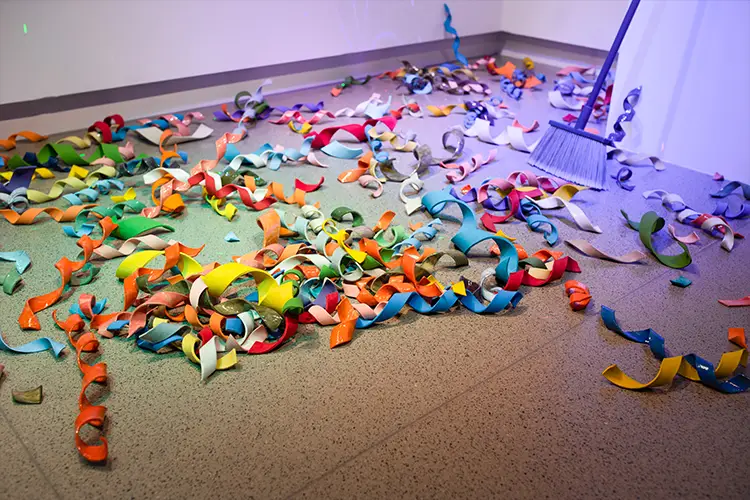
Yiwei Leo Wang: Nightlife as Canvas, Joy as Collaboration
Beyond the gallery’s sterile white walls, Wang envisions a different kind of artistic encounter—one that unfolds not through quiet contemplation but in motion, light, and noise. He dreams of installing his work within spaces of collective energy: nightclubs, parties, celebratory gatherings where the art coexists with dancing bodies and unfiltered emotion. For Wang, these environments aren’t distractions but the true stages where his art can come alive. Here, under colored lights and thumping bass, reflection becomes reaction, and interaction takes the place of passive viewing.
This vision underscores a key component of Wang’s philosophy: art is not an isolated object, but a participant. He seeks out those moments when aesthetic experience fuses with bodily movement, when people don’t just see the work but live with it. In these settings, his glittering sculptures, refractive materials, and playful objects find new meaning. They become part of the architecture of joy, weaving themselves into the rhythm of a party or the mood of a crowd. Rather than interrupting life, the art enhances it, asking not to be admired from afar but embraced up close.
Such a vision challenges the conventions of art presentation, and that’s precisely the point. Wang wants to break the fourth wall of fine art, pushing it into environments where authenticity isn’t judged by theory, but by energy and emotion. His installations aren’t just aesthetic—they’re experiential. They invite intimacy, spontaneity, and vulnerability, all within the pulse of shared joy. In doing so, Wang continues to expand the possibilities of queer art, turning each reflection, sparkle, and synthetic shimmer into an invitation to reimagine how, and where, art can truly resonate.
